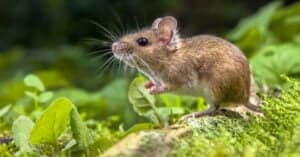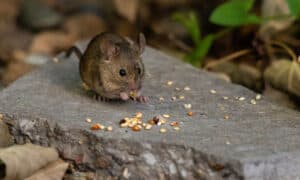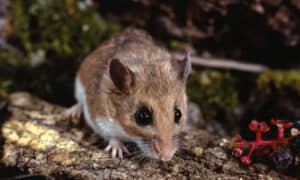If you’ve ever seen a round, fluffy hamster in a pet store, chances are you’ve thought about owning one. Hamsters are cute and relatively low-maintenance, making them great pets. But if you’re planning to own hamsters of different sexes, you may be pondering the possibility of offspring. After all, hamsters will breed given the chance, and they breed quickly! So how long are hamsters pregnant? How many little hamsters will they produce? And how often can they mate? Find out as we delve into the world of hamsters!
Types of Hamsters
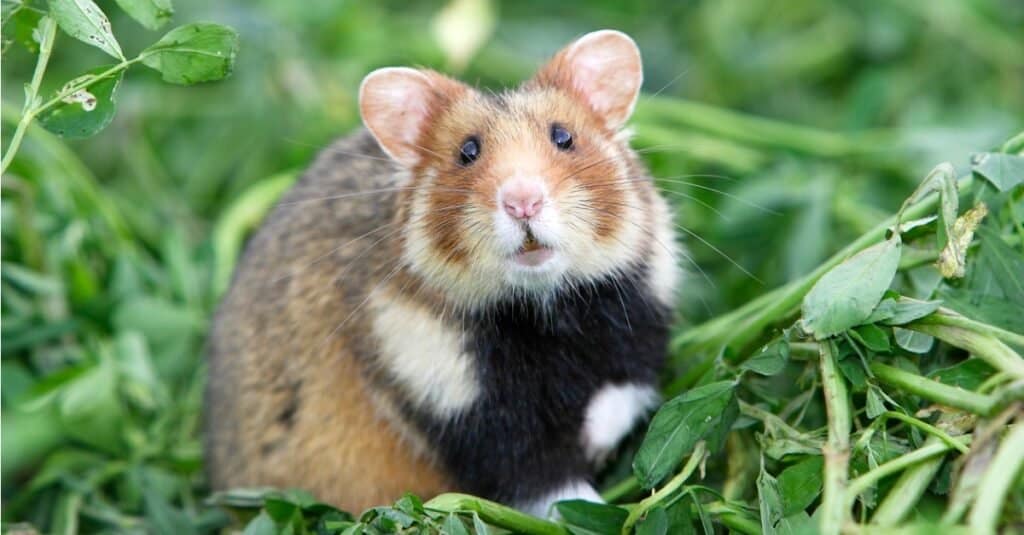
Hamsters are small, tailless rodents with short legs, wide feet, and small ears.
©iStock.com/Michel VIARD
Hamsters belong to the family Cricetidae within the order Rodentia. They are small, tailless rodents with short legs, wide feet, and small ears. Over 20 species of hamsters exist in 7 genera. Of these species, only a few make suitable pets. These 5 species are the most common:
- Syrian hamster (Mesocricetus auratus): A large, golden-brown, solitary hamster.
- Chinese hamster (Cricetulus griseus): A small, extremely active hamster.
- Campbell’s dwarf hamster (Phodopus campbelli): A small, sociable, active hamster.
- Roborovski dwarf hamster (Phodopus roborovskii): A tiny, bold, and playful hamster.
- Winter white dwarf hamster (Phodopus sungorus): A reserved white or grey hamster.
Hamsters are not only domesticated as pets. Some species live in the wild, including the following:
- Chinese striped hamster (Cricetulus barabensis): A greyish-brown hamster native to central and eastern Asia.
- Eversmann’s hamster (Allocricetulus eversmanni): A brown and white hamster native to Kazakhstan.
- Romanian hamster (Mesocricetus newtoni): A brown and white hamster with a black stripe native to Bulgaria and Romania.
Hamster Appearance and Size
Hamsters come in a variety of colors and sizes. Possible fur colors include white, grey, tan, golden, brown, black, and red. Any mixture of these is possible. Some species, like the Mongolian hamster, only produce one consistent color or pattern. Others, like the Campbell’s dwarf hamster, come in a number of colors and patterns. One species, the Winter white dwarf hamster, changes color in the winter from grey to white for camouflage.
Hamsters range in size from 2-6 inches in length. On average, they weigh 6.2 ounces. The smallest hamster species is the Roborovski dwarf hamster, only 2 inches in length. The largest is the Syrian hamster, which grows up to 6 inches long.
Hamster Diet and Predators
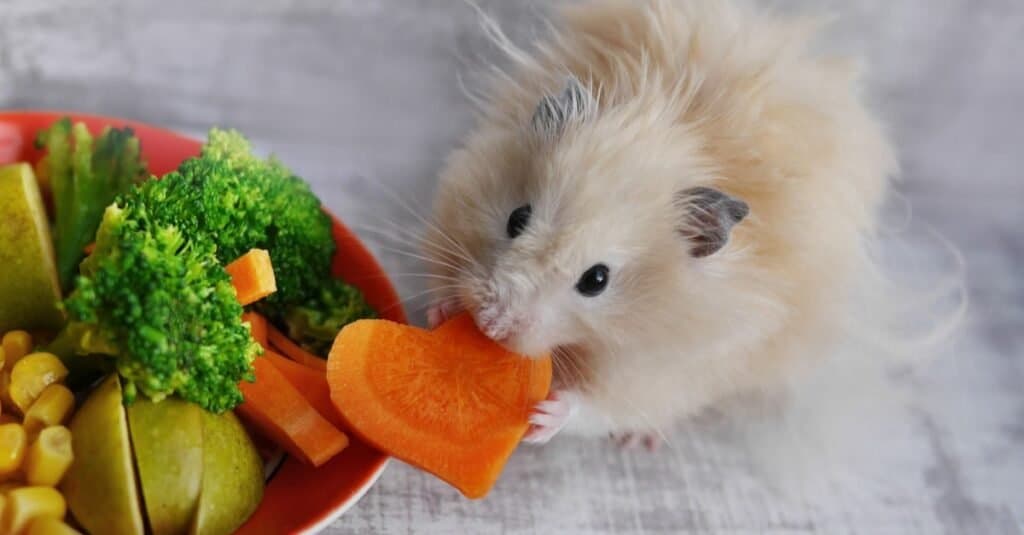
Hamsters are omnivores, though they are perfectly content as vegetarians in captivity.
©tanya_morozz/Shutterstock.com
Hamsters are omnivores, though, in captivity, they are perfectly content as vegetarians. Pet owners should feed their hamsters a varied diet with plenty of water. Hamster pellets, seeds, nuts, grains, fruit, vegetables, cracked corn, and timothy hay are all approved food sources. Fruit should only be given in moderation as some hamsters are at risk of diabetes. For this reason, sugary treats are not appropriate for your hamster.
Wild hamsters also eat seeds, nuts, and grains, though they may supplement their diet with meat. Insects like mealworms occasionally provide protein and fat. They also eat frogs, lizards, and other small animals.
Predators are unlikely to eat captive hamsters, though housecats may pose a problem. In the wild, however, hamsters have a number of predators to worry about. The most common are foxes, mustelids, snakes, and birds of prey like owls and falcons.
Hamster Social Behaviour
Some hamsters are social animals, requiring the company of others to be content. Other hamsters prefer to live on their own and may even prove aggressive when sharing space. Campbell’s dwarf hamsters, Roborovski dwarf hamsters, and Winter white dwarf hamsters are all social in nature. They do best with at least one companion, though it’s best if they are introduced to one another at an early age. The Syrian hamster is notoriously solitary and needs its own cage.
Even hamsters that enjoy sharing a cage should be given plenty of space to move around. If they feel too confined, they may become territorial, attacking and even killing each other.
Hamster Reproduction and Lifespan
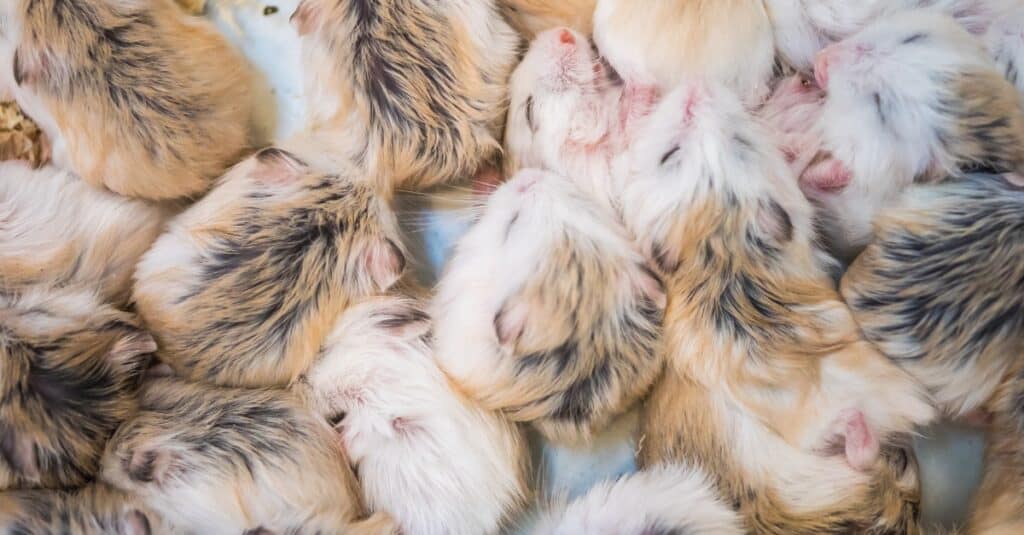
A female hamster’s estrous cycle lasts 4 days. She can safely bear up to 3 litters over the course of her lifetime.
©iStock.com/Manatchon
Hamsters mate extremely quickly in a closed environment. If viable hamsters of different genders are kept in the same cage, the female will typically become pregnant within a few hours or days. A female reaches sexual maturity at 4-6 weeks, though she should not breed until 8-10 weeks to avoid stillbirths. Males reach sexual maturity in the same time period, tending toward the earlier side of the spectrum.
A female’s estrous cycle lasts 4 days. The evening is the prime mating time as hamsters are nocturnal. They give birth to litters of live pups, which are blind for the first 2 weeks of their lives. Weaning occurs after 3-4 weeks. Care should be taken with the young as hamsters often eat their pups.
Females can get pregnant several times throughout their lives, but after 3 litters, their health usually declines. Hamsters typically only live up to 2-3 years, even in captivity.
How Long Are Hamsters Pregnant?
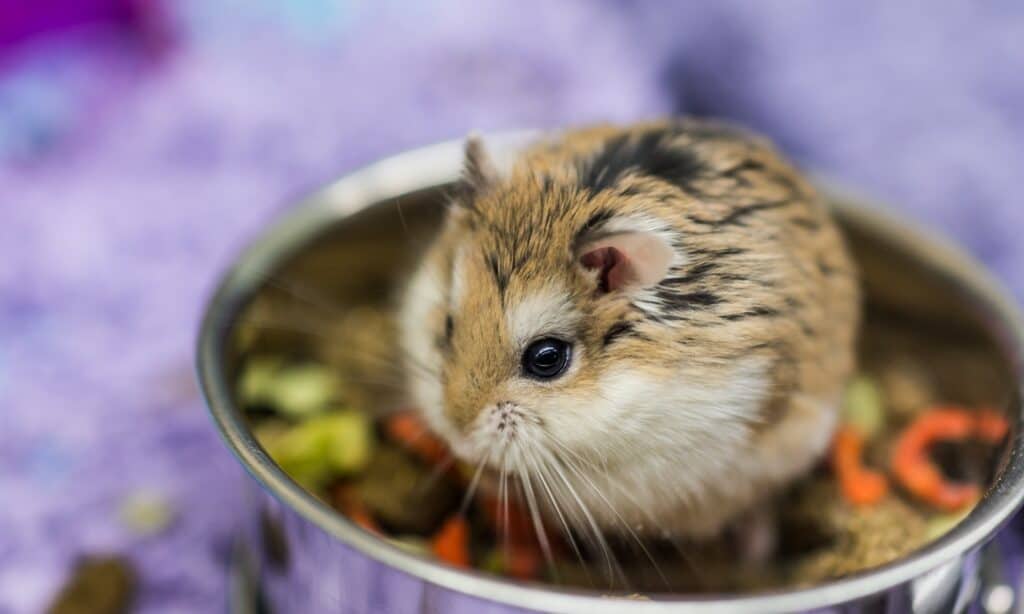
Hamsters are pregnant for 16-22 days, depending on the species.
©iStock.com/krblokhin
Hamsters are pregnant for 16-22 days, depending on the species. For example, the gestation period of Syrian hamsters lasts between 16-17 days, but for Roborovski hamsters, it lasts 20-22 days.
How Can You Tell If a Hamster is Pregnant?
It can be difficult to tell a pregnant hamster apart from a chubby hamster. One way to tell is by body shape. Overweight hamsters tend to appear round, like an apple; pregnant hamsters, on the other hand, are pear-shaped.
There are a couple of other ways to identify a pregnant hamster. Firstly, her nipples will begin to protrude and will generally appear more prominent. She may also start hoarding food more than usual. At some point, she will make a nest for her litter. It’s a good bet that a female hamster exposed to a male will become pregnant at some point.
How Often Can Hamsters Get Pregnant?
Hamsters can get pregnant with every estrous cycle, which occurs every 4 days. Although scientists don’t recommend that hamsters bear more than 3 litters in their lifetime, they are technically capable of producing young every month. This takes into account the weaning time for pups, which is 3-4 weeks. Hamster owners should leave at least 3 months between litters to prevent health complications.
Hamster Litter Size
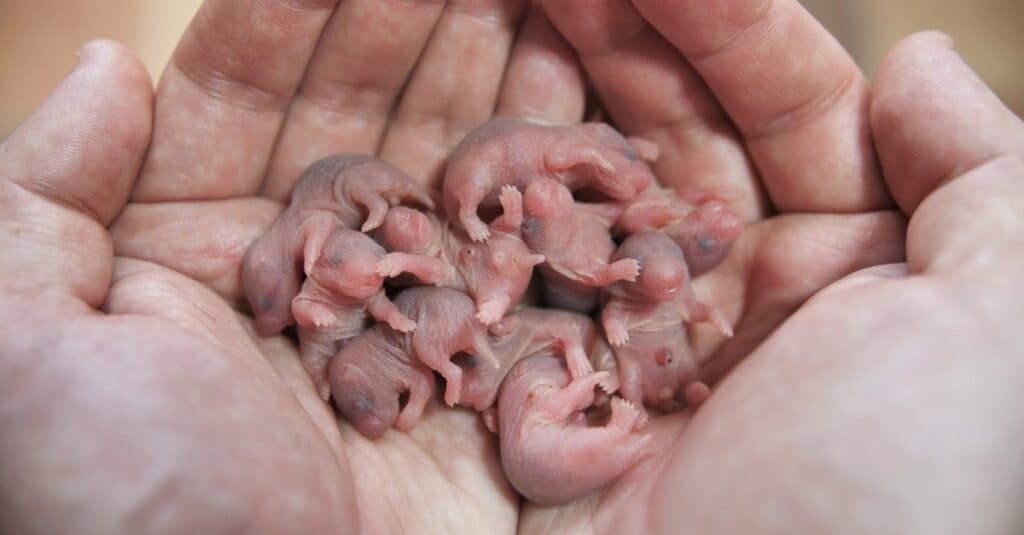
Hamsters produce litters of 4-6 pups on average, though up to 20 pups are possible.
©iStock.com/Mikhail Davidovich
Hamsters produce litters of 4-6 pups on average, though litters of 12 are not uncommon. Some contain as many as 20 pups. Pups are born hairless, blind, and deaf. Their incisors are present at birth. The pups should not be handled by humans before they are 7 days old. This is both for their health and for the comfort of the mother.
Why do mothers sometimes eat their pups? Usually, the answer has to do with stress. If the mother feels threatened or fearful in her environment, she may take it out on her young. Sometimes, however, it happens by accident. Mothers carry their pups in their mouths to protect them, so an unintentional bite may turn into full-on cannibalism!
It’s important to supply mothers with ample food at all times. If she is deprived of food in any way, she may turn to her pups as a food source. She may also end a pup’s life if she perceives it to be defective.
Hamsters make cute, cuddly pets, but they are also voracious breeders. Keeping well informed about their reproductive process is vital to ensuring a good experience for the owner and pet.
The photo featured at the top of this post is © Dmitry Naumov/Shutterstock.com
Thank you for reading! Have some feedback for us? Contact the AZ Animals editorial team.




